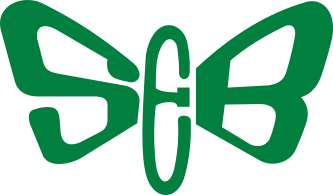Breeding technique of Selenothrips rubrocinctus (Giard, 1901) (Thysanoptera: Thripidae) on roses leaflets
DOI:
https://doi.org/10.37486/2675-1305.ec03054Keywords:
Red-banded thrips, insect multiplication, cut flowers, mass rearingAbstract
The development of adequate methods for maintaining populations of arthropod organisms in the laboratory has been a challenge due to the characteristics of each species. This work has aimed to define a method for breeding Selenothrips rubrocinctus (Giard, 1901) in rose leaflets in order to study this species in the laboratory. A condition which could maintain the leaflets turgor for a longer time was sought, in order to guarantee both the survival and multiplication of the insects, and less influence of abiotic factors. Four types of substrates were tested: a) a filter paper disk moistened with distilled water covering the bottom of a Petri dish and; b) a vegetable sponge moistened with distilled water surrounding the base of the leaflet; c) a potato, dextrose and agar (BDA) in a microcentrifuge tube surrounding the base of the leaflet; and d) hydrogel in a microcentrifuge tube surrounding the base of the leaflet. The filter paper moistened with distilled water allowed 65% of the leaflets to remain turgid over a 10-day period and was the most suitable substrate for thrips breeding. With the results at hand, we described S. rubrocinctus breeding in the laboratory. The adopted methodology provided the population density stability of the bred insects, as well as the obtainment of specimens of S. rubrocinctus in quantity and quality throughout the entire period of development of studies on the biology of the species.
Downloads
References
Cohen, A. C. (2015) Insect diets: Science and technology. Boca Raton: CRC Press.
Da Silva, D. L.V.; Mesquita, A. L. M.; Mota, M. D. C. S.; Bernardino, C. R. F. (2019) Hábito alimentar de espécies de Thysanoptera associadas ao cajueiro. In: Seabra, G. (Org.). Terra - Habitats Urbanos e Rurais, p. 865-872, Ituiutaba: Embrapa Agroindústria Tropical - Barlavento.
Denmark, H. A.; Wolfenbarger, D. O. (2016) Red-banded thrips, Selenothrips rubrocinctus (Giard) (Insects: Thysanoptera: Thripidae). Electronic Data Information Source - UF/IFAS Extension, 108: 1-4.
Dos Santos, J.R., Morales, M.N., Pec Hernández, M.M., Souza, B. (2021) Can Selenothrips rubrocinctus (Thysanoptera: Thripidae) become a new pest in rose bush?. Biology, 76(11). doi: 10.1007/s11756-021-00942-3
Mascarenhas, A. L. S.; Pinnent, S. M. J.; Silva, J. J. C. (2016) Tisanopterofauna associada à plantas ornamentais e cultivadas no Sudoeste Baiano. EntomoBrasilis, 9(1):31–35. doi: 10.12741/ebrasilis.v9i1.536
Oliveira, J. D. M.; De Bortoli, S, A.; Dos Santos, R. F.; Moreira, A. N. (2010) Desenvolvimento de metodologia de criação e multiplicação de Aphis gossypii: avanços e sucessos. Comunicata Scientiae, 1(1): 65-68.
Parra, J. R. P. (2015) Técnicas de criação de insetos para programas de controle biológico. Piracicaba: ESALQ/FEALQ.
R Core Team (2020) The Comprehensive R Archive Network (Version 4.0.2). https://brieger.esalq.usp.br/CRAN/
Soesanthy, F.; Maryana, N.; Sartiami, D.; Karmawati, E. (2012) Biologi Selenothrips rubrocinctus Giard (Thysanoptera: Thripidae) pada Tanaman Jarak Pagar. Buletin RISTRI, 3(3):207-216.
Downloads
Published
How to Cite
Issue
Section
License
© The author(s) - Published by Sociedade Entomológica do Brasil









